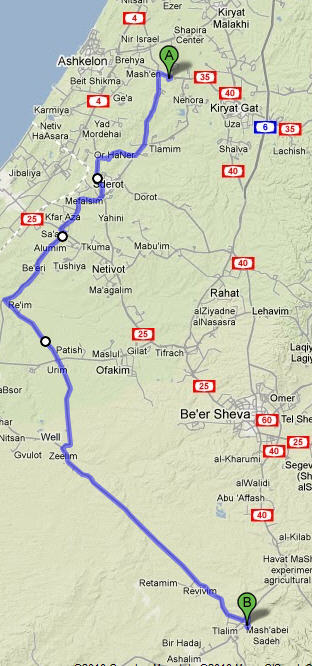
Click pictures to enlarge
A number of pictures in this blog are courtesy of Carl Hochhauser, Ph.D., the ICTP Director of Training.
| Israel Blog | Cycle for Hope - Day 1 | Cycle for Hope - Day 2 | Cycle for Hope - Day 3 |
|---|

We began riding through very pleasant farm country where they grew wheat and all kinds of veggies -- swiss chard, kohlrabi, cabbage, carrots, fennel, etc. After about an hour of easy riding, we entered Sderot, the town hardest hit by the Katyusha rocket attacks from Hamas in Gaza.
I rode the last several miles with 70-year old Holocaust survivor Flora Jakob. We were the two oldest riders (I'm 69). The youngest was 12.
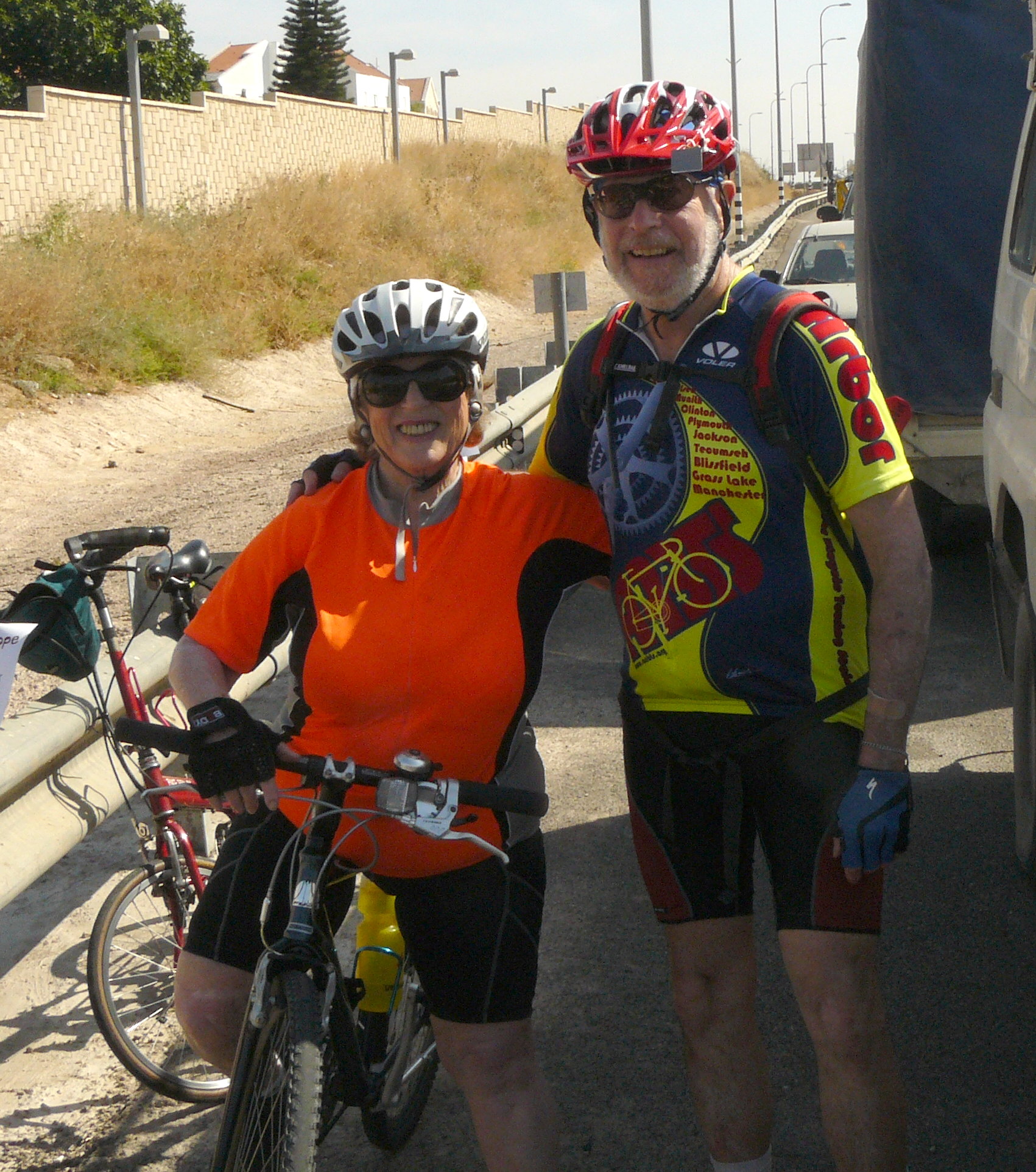
As we entered the town, we saw new apartments being constructed. The construction workers were using cranes to lift pre-fab reinforced concrete bomb shelters into place like building blocks so that each new apartment had its own attached shelter. When the sirens sound, Sderot residents have 20 seconds to get into their shelters before the rockets hit.
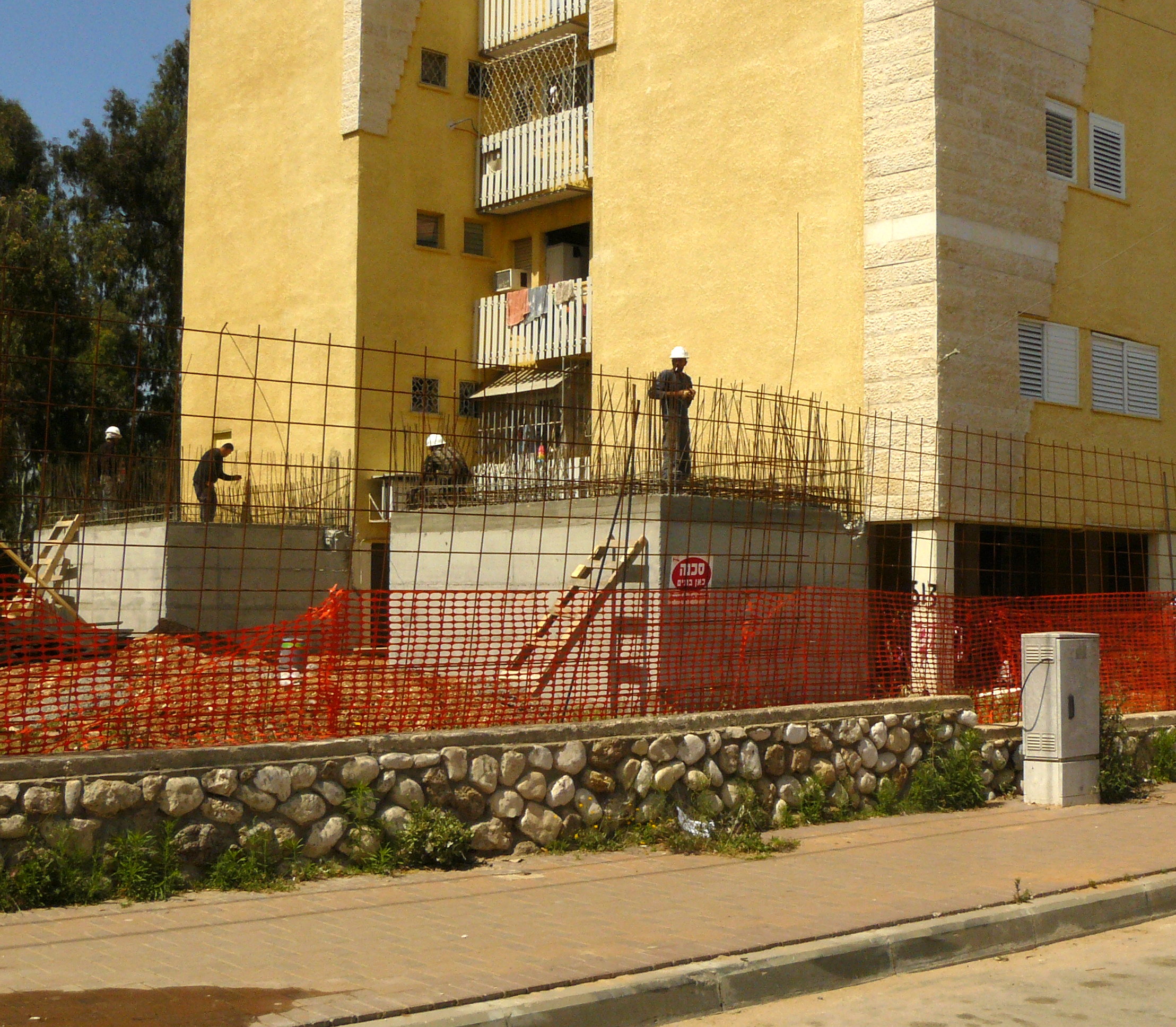
Surprisingly, the town looked like a normal Israeli city with flowers, trees, neat buildings and no rubble.
We were visiting the Parents Place in Sderot, one of the ICTP projects designed to help build resilience in parents and their young children.
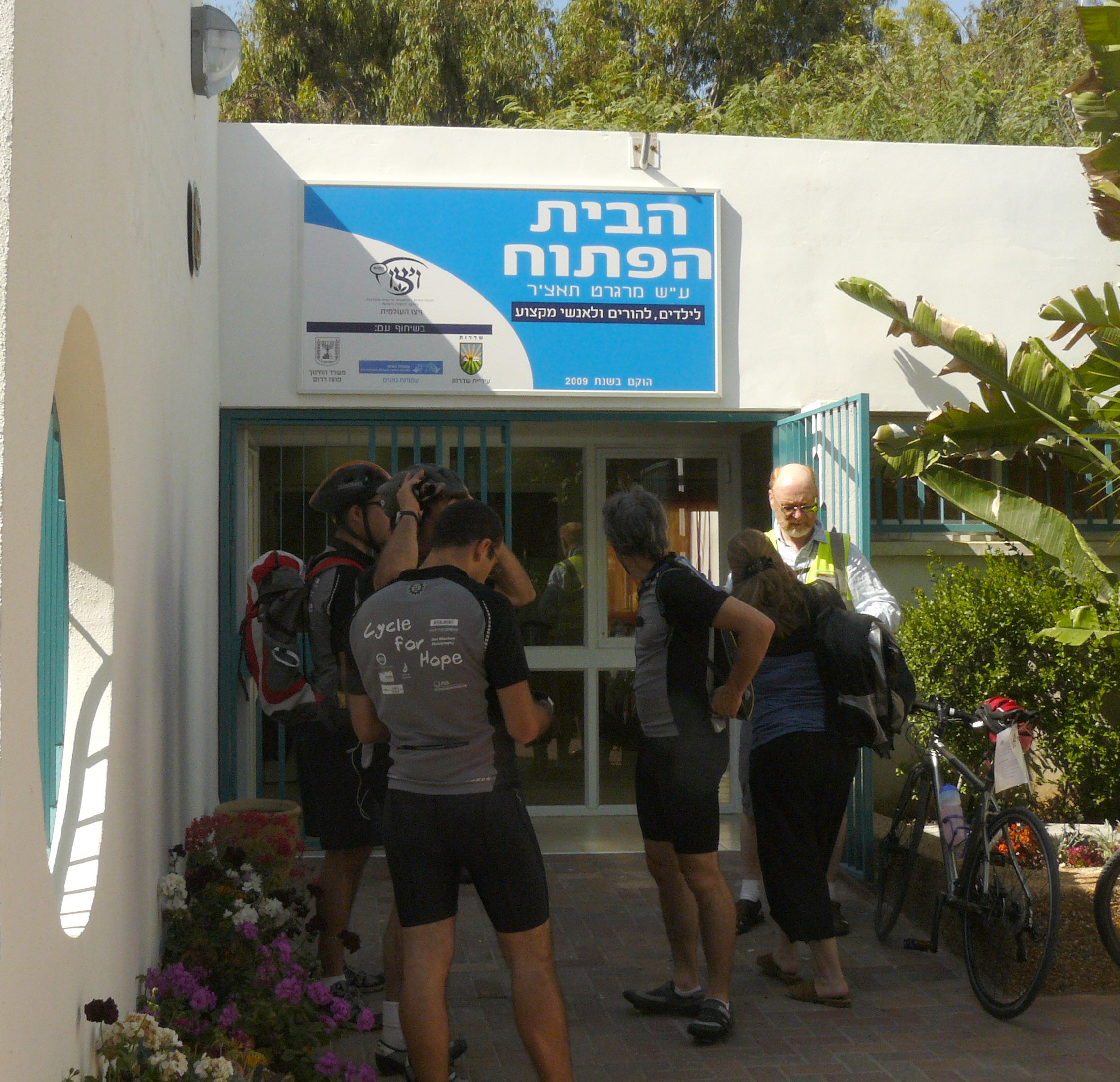
It was a bittersweet experience. Juxtaposed with cuddly stuffed animals and toys were steel-doored concrete bomb shelters off every room
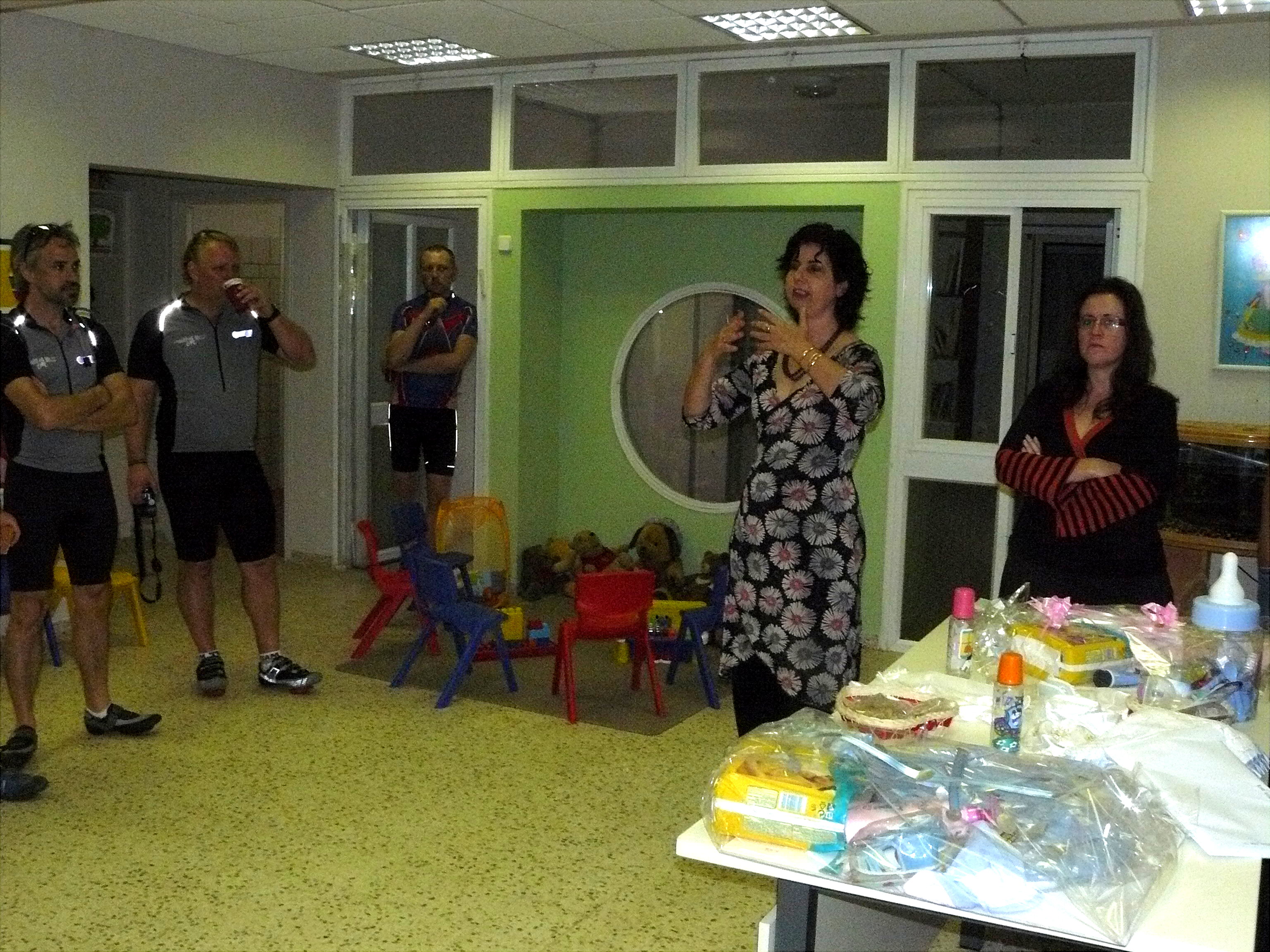
|
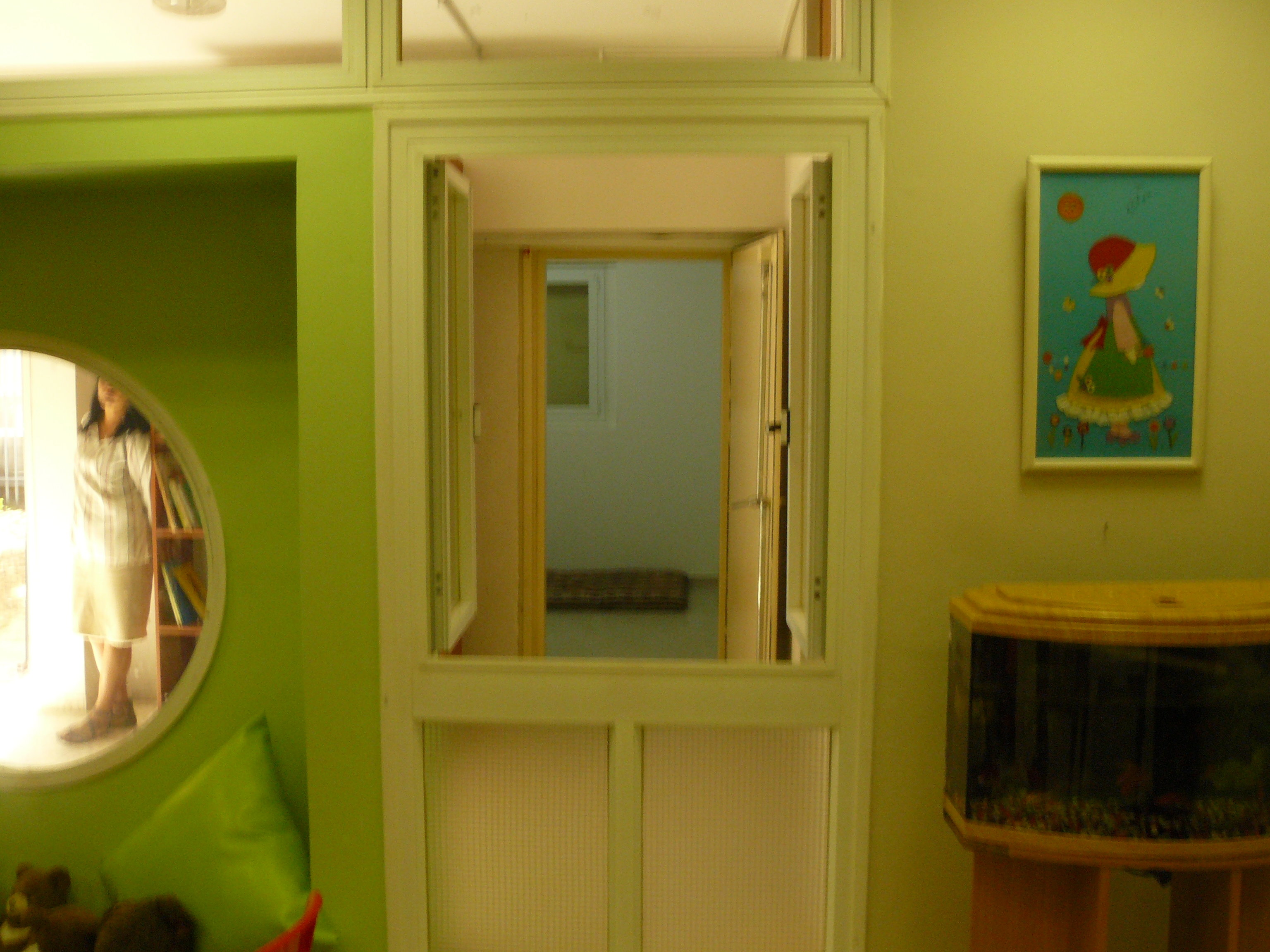
|
|
|---|---|---|
It was clear that caring and safety were at the heart of all they did. The doors were fitted with special protectors so children could not catch their fingers in the hinges when the door was closed.
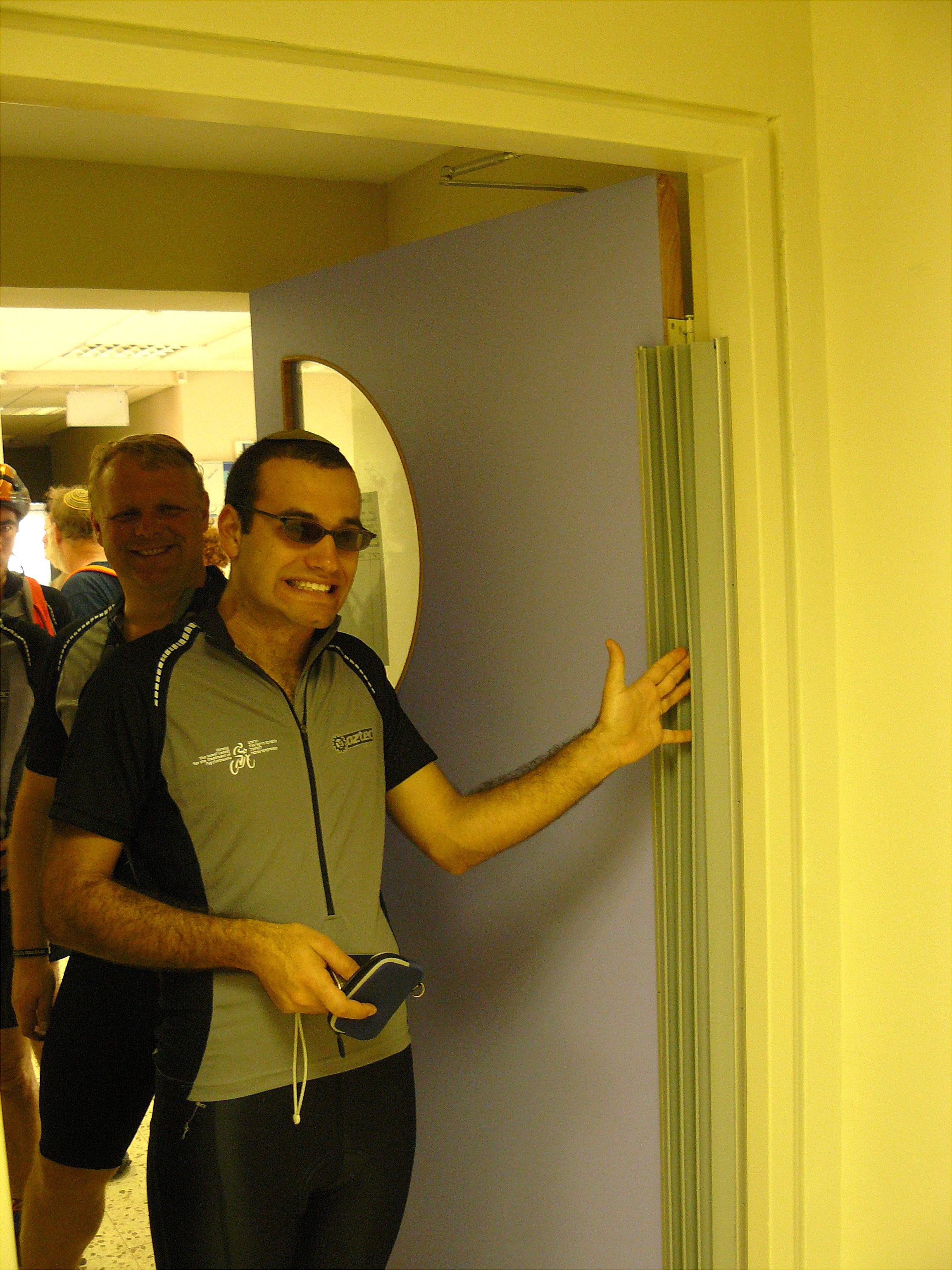
We left Sderot and got on the highway again. It was carrot harvest season and there were pieces of carrot on the shoulders of the highway -- carrots and Katyushas. Soon I saw a huge city off to my right. I thought, maybe this is Be'er Sheva, but Be'er Sheva was too far away and in the wrong direction. Then it struck me -- it was Gaza City only a few kilometers away. It bought the perils of life in this part of Israel starkly into perspective. The people at Parents Place said that the last Katyusha had fallen two days before we arrived, officially causing no damage (except for the child whose finger had been caught in the bomb shelter door in the rush to close it before the rocket hit).
We stopped at a park for an elaborate lunch; four types of hot quiches while Shachar made fresh pizza with tomato sauce, tuna, corn and mushrooms.
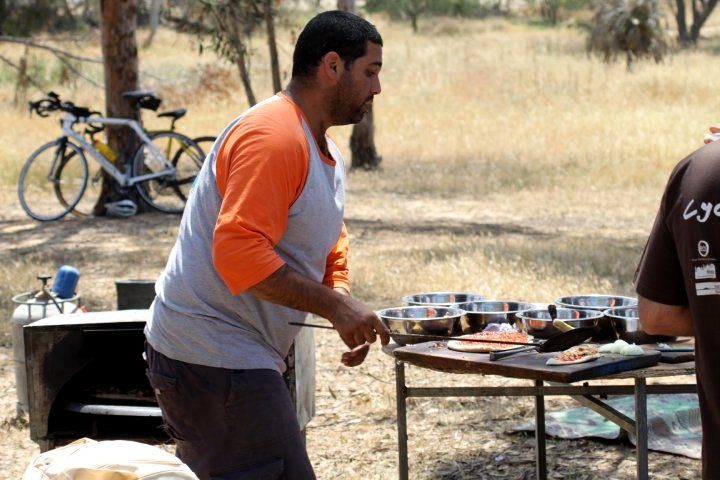
The staff layed out some mats on the ground and I took a rest using my Camelback backpack as a pillow. After I was got up, Shlomo Hammer asked if he could use my pillow. Of course, I answered. Unfortunately he lay on the drinking hose to the Camelback and a lot of my Gatorade leaked out and all over his shirt. He changed shirts and I added more water to the Camelback and we continued on our way. Having diluted Gatorade may have caused me problems later in the trip.
Before we left, we lined up for a group picture of all 16 3-day riders
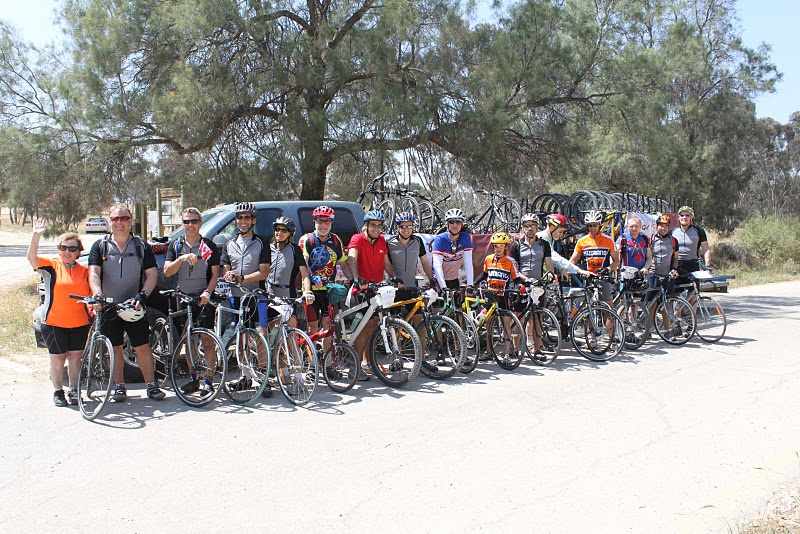
The countryside went from beautiful farms to sandy desert. The biggest excitement was passing a large ostrich farm
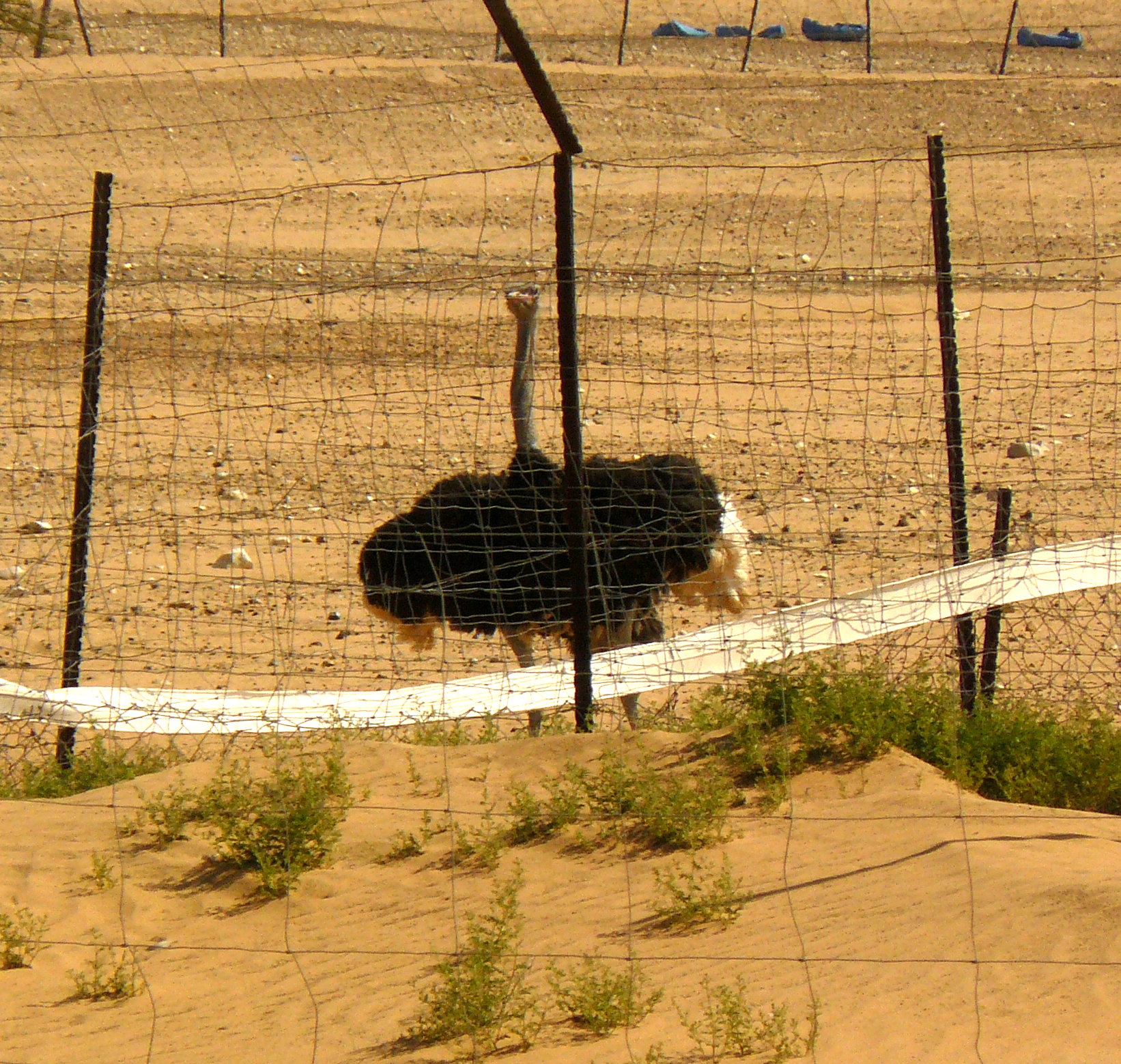
Apparently I took too much insulin for the amount of exercise I was doing and about two hours after leaving our lunch spot, my sugar was quite low (47) and I had stomach cramps. I ate two GU energy gels, drank lots of Gatorade and decided to continue no matter how I felt. It was a long slog through the desert, past Bedowin encampments and over a ford with 4 inches of water at the bottom. David Bier, a social worker from Chicago, kept me company and was a great help in keeping my sprits up.
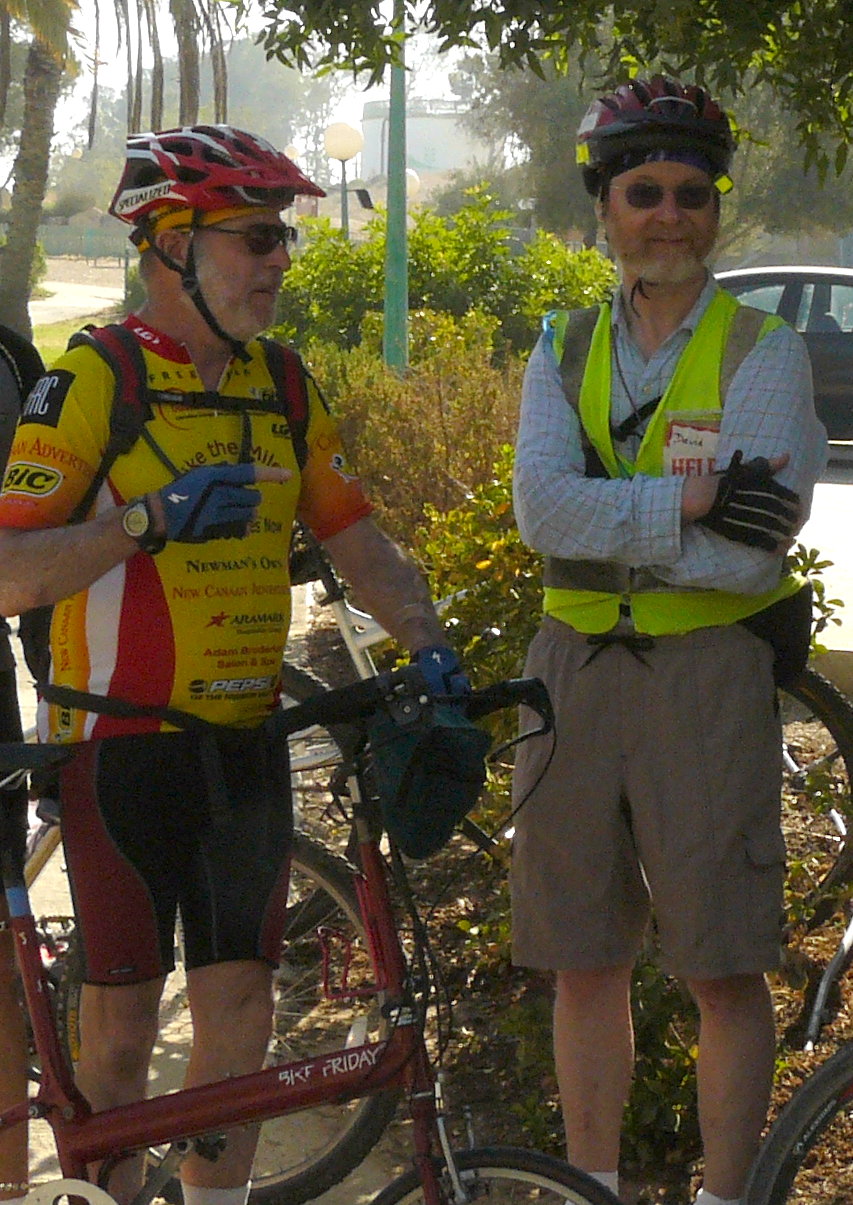
I arrived in Kibbutz Mashabei Sade about 5:00 PM. I was really touched when I arrived at our guesthouse and Shlomo Hammer insisted on carrying my bike and my suitcase up to my second floor room -- thank you Shlomo. Shlomo is shown below with his brother Yitzi.
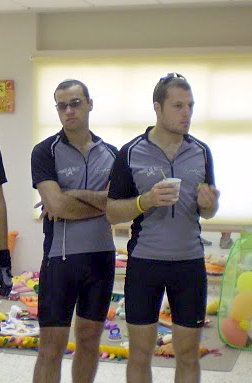
I did not feel very good and had to force myself to eat dinner. Danny Brom, the head of the ICTP, was the guest speaker after dinner and he showed a very powerul video of the work they do in a program called Peace of Mind designed to help Israeli solders make the transition from the millitary back to civilian life. In addition, we had a soldier who had praticipated in Peace of Mind who spoke to us about how it affected him.
When I first heard about Peace of Mind, I didn't quite understand why taking recently discharged soldiers on a trip to Paris or Italy or on a cruise was worth the expense. But what I learned from Danny Brom and the soldier who spoke was that each returning soldier had festering trauma building inside, and most seemed to think they were alone in this suffering. In Israeli society, where toughness is expected, none of these former soldiers could share his or her feelings, a necessary first step in defusing self-destructive thoughts. By changing venue and working with trained therapists, the former soldiers were able to share their feelings with their closest friends (their army unit) allowing them to develop resiliency instead of PTSD. Of course they also had a great time enjoying a vacation together with their buddies.
Danny Brom was my roommate that night and I had hoped to chat with him, but I felt miserable, so I went to bed as soon as the program was over and had a restless uncomfortable night.
Day 3